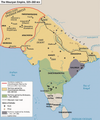
Size of this preview: 499 × 599 pixels. Other resolutions: 200 × 240 pixels | 400 × 480 pixels | 640 × 768 pixels | 853 × 1,024 pixels | 1,706 × 2,048 pixels | 3,054 × 3,666 pixels.
Original file (3,054 × 3,666 pixels, file size: 1.21 MB, MIME type: image/png)
File history
Click on a date/time to view the file as it appeared at that time.
| Date/Time | Thumbnail | Dimensions | User | Comment | |
|---|---|---|---|---|---|
| current | 05:35, 9 February 2024 |  | 3,054 × 3,666 (1.21 MB) | Buddhamitra sangha | More clarification |
| 22:37, 7 February 2024 |  | 3,054 × 3,666 (1.21 MB) | Buddhamitra sangha | Quality | |
| 22:10, 7 February 2024 |  | 3,054 × 3,666 (695 KB) | Buddhamitra sangha | Ceded area correction | |
| 04:50, 8 December 2023 |  | 3,054 × 3,666 (1.43 MB) | Buddhamitra sangha | Uploaded own work with UploadWizard |
File usage
The following 2 pages use this file:
Global file usage
The following other wikis use this file:
- Usage on ba.wikipedia.org
- Usage on be.wikipedia.org
- Usage on ca.wikipedia.org
- Usage on hi.wikipedia.org
- Usage on hu.wikipedia.org
- Usage on nl.wikipedia.org
- Usage on simple.wikipedia.org
- Usage on te.wikipedia.org
- Usage on wuu.wikipedia.org
- Usage on zh.wikipedia.org